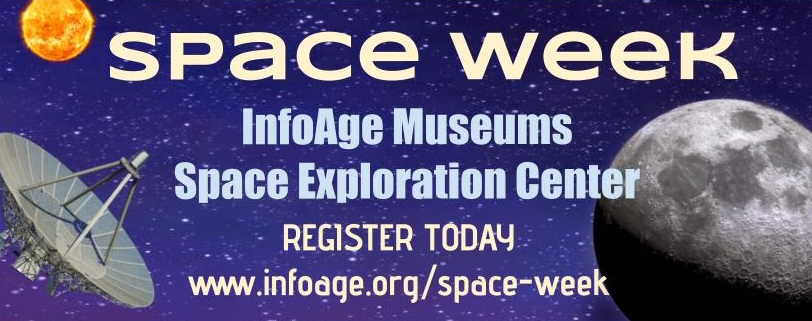The History of InfoAge Science & History Museums
Oral Histories - Oral History of DRS. STAN KRONENBERG & GEORGE BRUCKERInterviewee: DRS. STAN KRONENBERG & GEORGE BRUCKER
Interviewer: Michael Ruane
Date: 1998?
Place: Camp Evans – 9039
Media: NTSC Video
Summary: Mr. Irv Bauman
TAPE 9A DRS. STAN KRONENBERG & GEORGE BRUCKER
He began his work in Evans in 1953. Believed in sitting down and watching the world pass him by in the same chair. He worked for 46 yrs. With Dr. George Brucker, who had started his work in Evans 3 yrs. earlier. They both worked in the Nucleonics Branch that did instrumentation to measure radiation in the field. In the beginning, the Branch initiated a drive to recruit engineers in nuclear physics. There was a concerted drive to entice and recruit European scientists to work here. Stanley’s major effort lay in developing instrumentation for measuring nuclear radiation.
Dr. K. got his doctorate from the University of Vienna in 1952, in Nuclear Physics, after which he got a job with a medical company. The subject of his doctorate was highly classified. He received a postcard from the American Embassy, asking him to meet with U.S. Representatives. He met Dr. Ziegler and a U.S. official who offered him a position in the United States. He checked first with his girlfriend and then agreed to the offer. The U.S.Army smuggled him into the U.S. under Operation Paperclip. He entered the U.S. as a Canadian immigrant. He fit in quite well in the Nucleonics Branch, creating instrumentation for measuring nuclear radiation.
Such instrumentation was used during the Atomic Bomb Testing in the Pacific. Dr. K remembers every bomb test held here, to include underground testing. He discussed the need for understanding the explosion parameters, developing formulae to implement his work. He constructed secondary electron mixed radiation dosimetry which was used in all the tests. All instrumentation was made in the Evans Shops under his direction and turned out to be very useful in defining the explosion parameters. He was able to characterize the output of the nuclear weapon, noting the electromagnetic pulse emitted from the weapon. He referred to Operation Smallboy in Nevada which took place during 1961 -1962, the data developed from which remains classified. He then mentioned the Russian Sputnick Program briefly. He observed and studied that event. Stan was the architect of time dependence from the instant of the explosion to a long time much later. He could measure the temperature at the instant of the explosion. He discussed the physics of the explosion. remarking that its temperature exceeded that of the sun.
Dr. K. received much funding for all his work. He spoke of the formation of the Institute of Exploratory Research which had E, C, and S Divisions. Recently that Laboratory was transferred to another research laboratory in Maryland. Dr. K. became the Director of Division S. George let the Evans Labs in 1962 to work at the David Sarnoff Labs at RCA. He helped to design radiation sensors in space using Cobalt-60 and Van DerGraf Generators. He also designed electronics to help in space survival. At the time, RCA belonged to GE who was in the Space business He returned to work with Stan as his consultant, but also worked with NASA at the Goddard Space Center. George returned to Evans 6 yrs before this. He went back to direction sensing, location of radiation sources. He was involved in the design of a sensor that could see thru thick concrete walls to estimate the intensity of the source. It could be used to detect radiation warheads. The sensor works to low-level radiation intensity.
Between the two men, there were 90 years of work. Dr. K.says weekends are boring, weekdays are looked forward to. The two men have written 200 papers in 6 years,17 publications, 2 patents, and 5 patent disclosures. They averaged 3 papers/yr. George concluded this interview with a humorous anecdote. It appears that Stan asked George to find a suitable can for one of his experiments. After rummaging through many possible sources, he came across one in a Chinese restaurant filled with Chinese noodles. The men ate and enjoyed the noodles; the can provide a light-tight enclosure which provided the exact dimensions required in the experiment.
41 min.
Page created August 2, 2002
We Need Your Help! Volunteer with Us.
Join our mission to preserve historic Camp Evans and teach the public about science and history.
Sign up to join our team of volunteers and start on your own mission today.
InfoAge Science & History Museums
2201 Marconi Road
Wall, NJ 07719
Tel: 732-280-3000
info@infoage.org
webmaster@infoage.org

